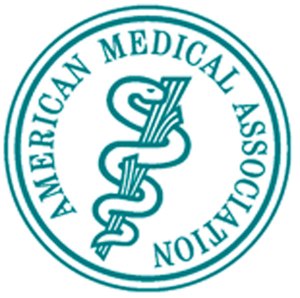“The nation's largest doctors' group has agreed to join efforts to repeal the military's 'don't ask, don't tell' policy.
The American Medical Association also voted to declare that gay marriage bans contribute to health disparities for gay couples and their children.
Both gay-rights policies were adopted Tuesday at the AMA's interim policy meeting in Houston.
The AMA says the 'don't ask, don't-tell' law creates an ethical dilemma for gay service members and the doctors who treat them.
The other measure declares that marriage bans leave gays vulnerable to being excluded from health care benefits, including health insurance and family and medical leave rights. The new AMA policy stops short of opposing the bans.”

There is a delicious irony in a medical group condemning discriminatory practices against gay and lesbian people, as it is well known that the much abused word “homosexual” was originally coined late in the 19th century as a medical term to denote what was then seen as a pathology.
Time has moved on, and personal orientation is no longer seen as a pathology for medical treatment, no matter what NARTH and the so-called “ex-gay” movement have to say about it. Even the Catholic Church agrees that the “inclination” in a person is natural and not in itself sinful – they just need to allow their theology to catch up with the implications of this. Unfortunately though, the simple recognition that there is no pathology is not enough: the damage has been done.
Let us now look at that late 19th century coinage, “heterosexual”. Yes, this too was a word invented in the 19th century, after its counterpart “homosexual”, and was also originally a medical term, used to denote a pathology. Yes, that’s right – a pathology – specifically,
“a morbid obsession with the opposite sex.”Now, “homosexuality” is no longer taken seriously as a pathology, but I submit that heterosexuality, as “a morbid obsession with the opposite sex”, is indeed a pathology and requires serious attention. Let me explain.
In the context of a simple orientation, or as specific sexual acts, I obviously do not suggest that “heterosexuality” is diseased or unnatural, any more than I would make that claim about any other sexual orientation or activity. However, at the level of society as a whole, the 20th century fixation with heterosexuality as a cultural norm to be imposed on all, fostered by this belief that it was “diseased”, aided and abetted by religious misinterpretations of Scripture and selective extracts from theology purporting to show that it is grievously sinful”, can certainly be called a morbid fascination, which has caused untold damage to the mental and physical health of many millions of people. It is this insistence that people conform to externally imposed sexual norms, quite contrary to innate orientation and psychological health, that has caused much higher rates of youth suicide among gay and lesbian youth than among their peers; that has led to the bullying that is often the proximate cause of the suicides; that leads people in to lives of duplicity and fear in a closet; that has led to active persecution by many governments, from Nazi Germany to Iran, Sudan and Uganda today – and which lies at the bottom of the bans on gays in the military, or on gay marriage, which are the immediate issues addressed by the AMA.
This obsession is entirely unnatural. Le t me restate once again, what should by now be well known, but sadly isn’t:
The homoerotic orientation is entirely natural, and has been found in all periods of history, in all parts of the world, and in most animal species.
Scientific research suggests that most people are neither exclusively attracted to the opposite sex, nor exclusively to the same sex. We lean more or less strongly to one or the other, but most of us are capable of responding to at least some degree to either. Social pressures however, influence how we deal with this.
Societies too are not typically exclusively modelled on the patterned on the modern, misnamed Western idea of “traditional” marriage. This model, a monogamous union of one man and one woman joined in a love relationship consecrated in church to raise children, is unique to the last two centuries in the West. Before that, Western marriage was primarily about protecting property and inheritance rights. In many parts of the world, and among the Hebrew patriarchs, polygamy was commonplace. In classical Greece and Rome, where European culture largely began, men did not expect to find sexual or emotional fulfilment in marriage, but took it from slaves, prostitutes, concubines or male lovers - if they were privileged citizens. If not, chances are their sexual lives were determined by their owners or masters, not by themselves.
Among Christians, marriage in church was not required (and was sometimes not possible) until the 12th century. Indeed, it has been suggested that a church ceremony was obligatory only for priests who chose to marry.
Outside of Europe and North America, the so-called "traditional", "time-honoured" model was even less typical until it was imposed by Western missionaries and colonial powers.
Even in the animal kingdom, exclusive heterosexuality is rare. Some degree of homosexuality is now known to occur in many, possibly most, animal species.
In short, the evidence from psychology, medicine, anthropology, history and zoology is that whereas homoeroticism is entirely natural if not common, exclusive heterosexuality is both unnatural and rare. As such, I have no hesitation in labelling the social "morbid obsession with the opposite sex" orientation as exclusive practice, and the resultant insistence on heterosexist laws and theology not only a social sexual perversion, but an extremely dangerous one.
No comments:
Post a Comment